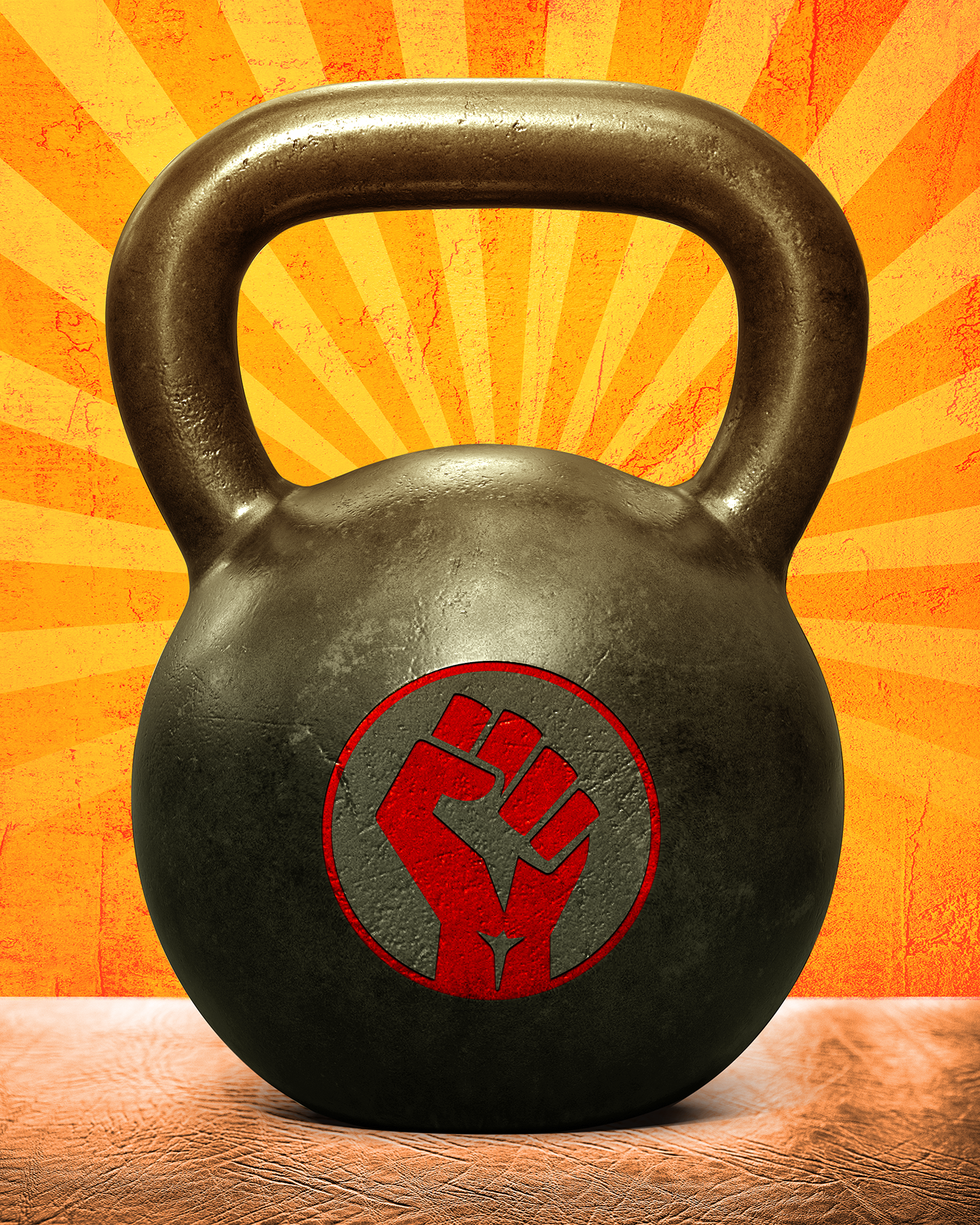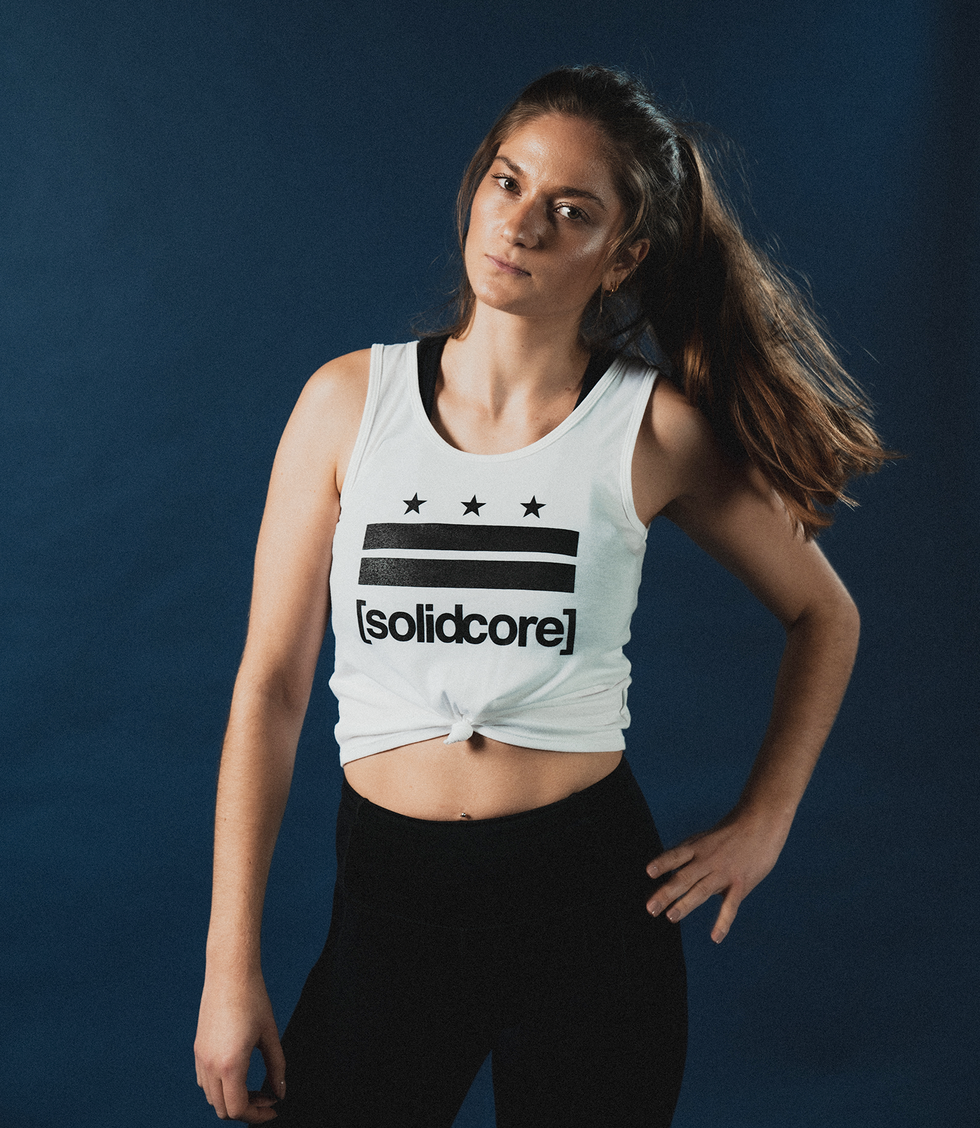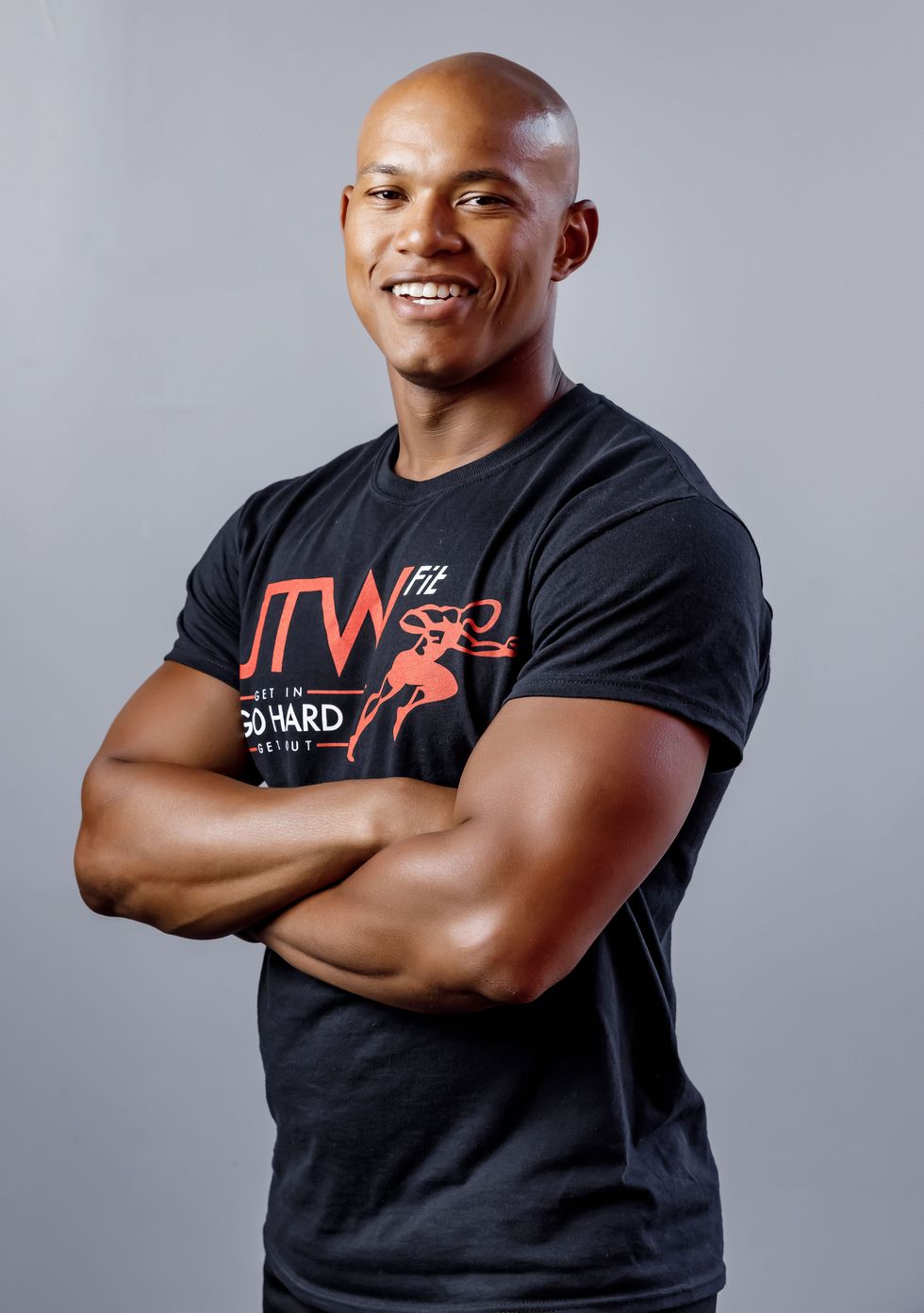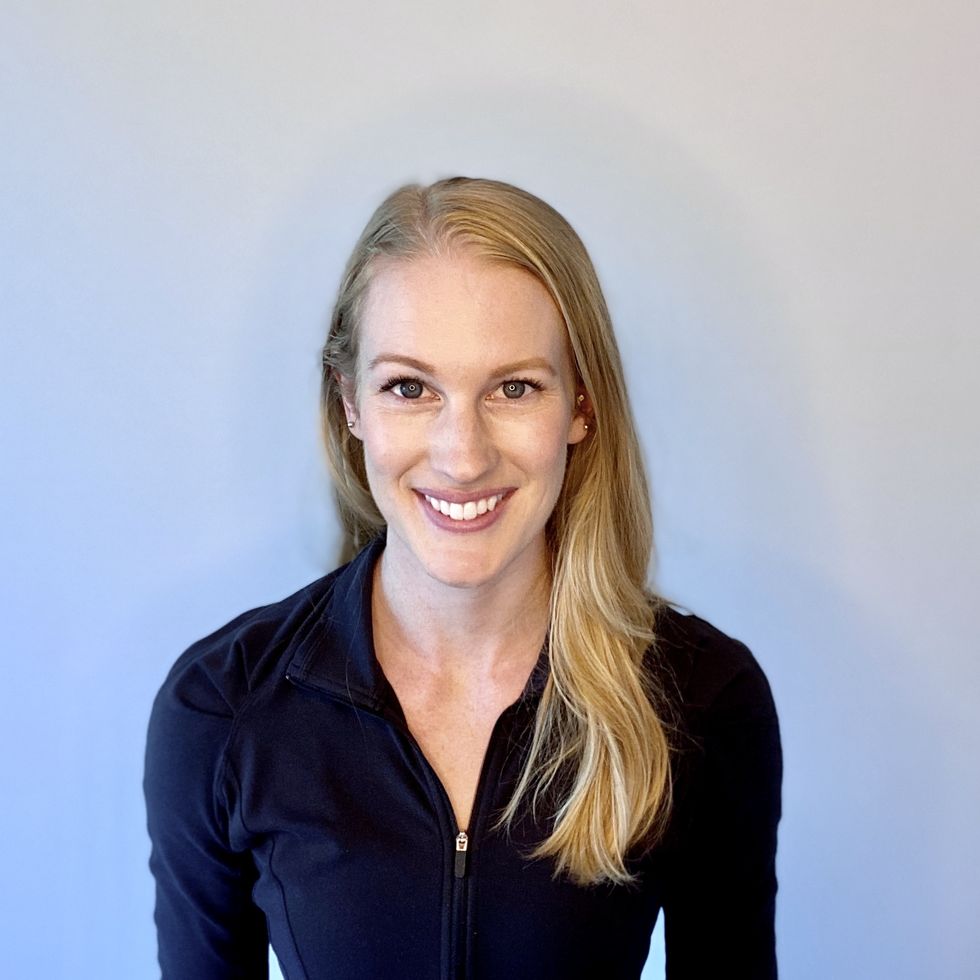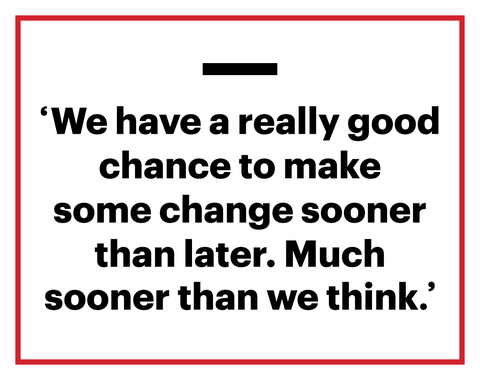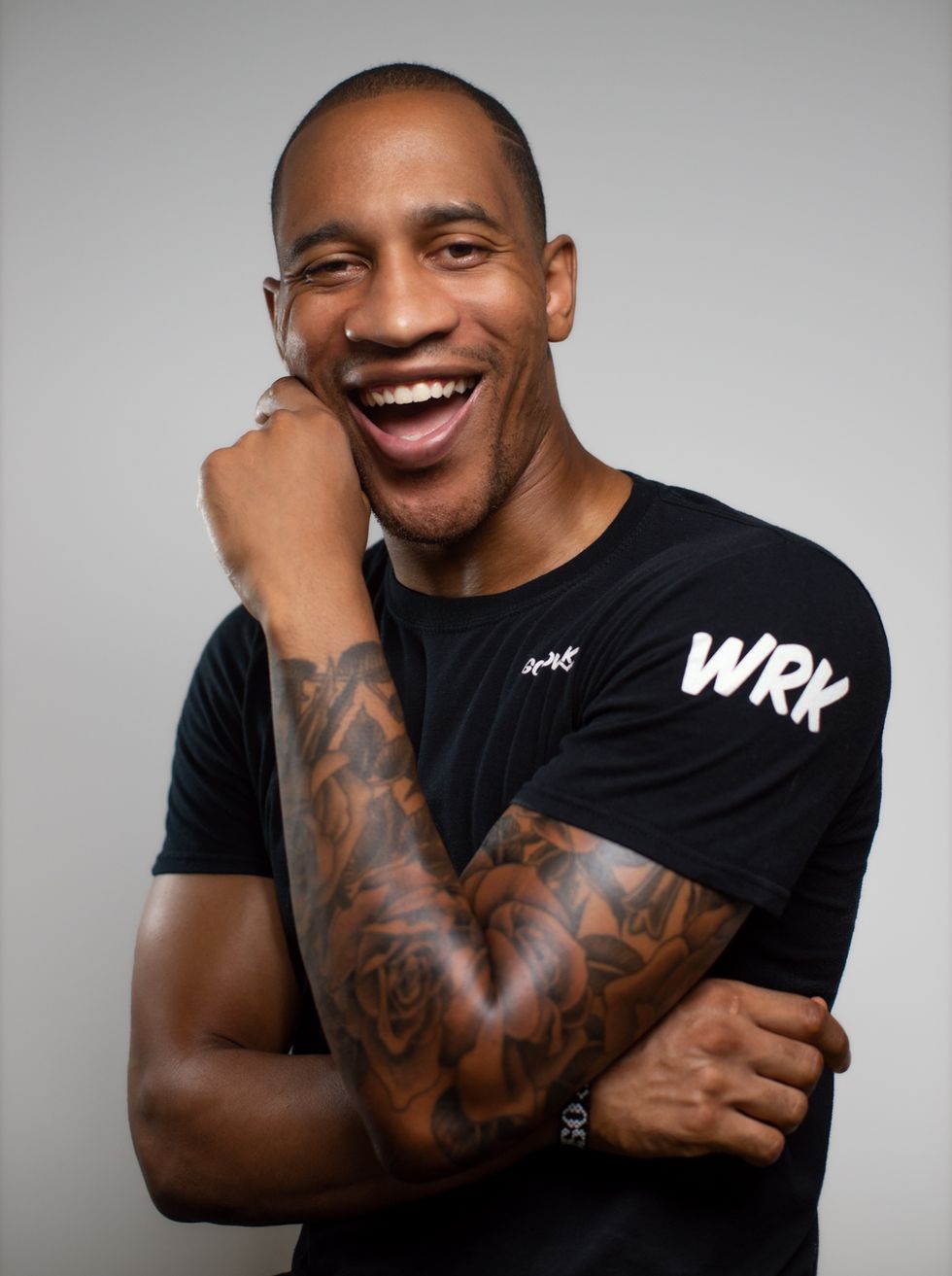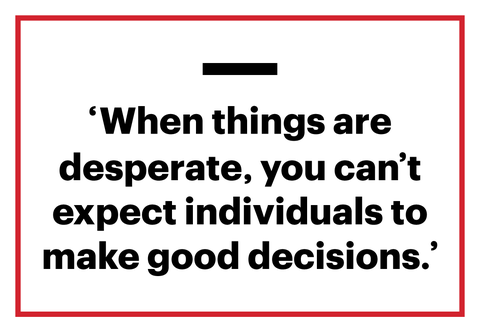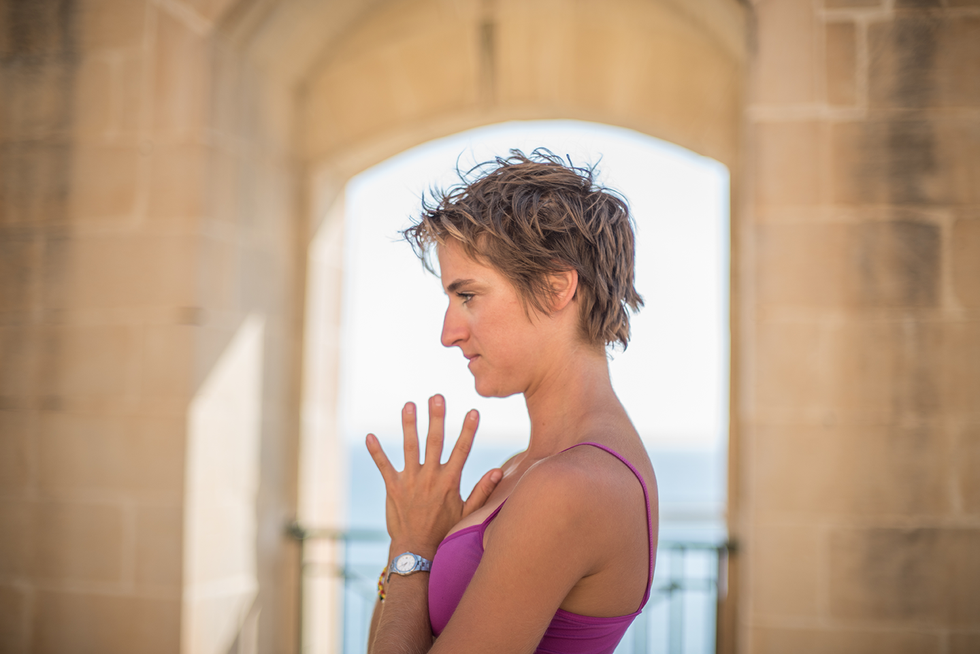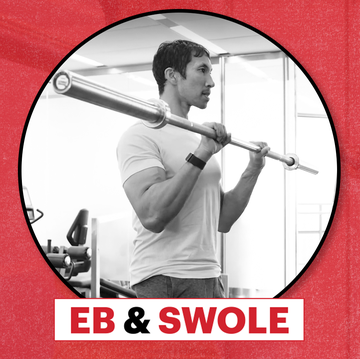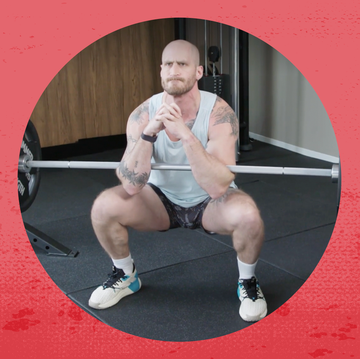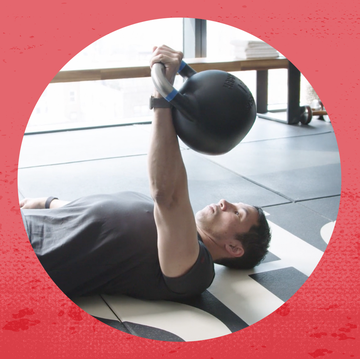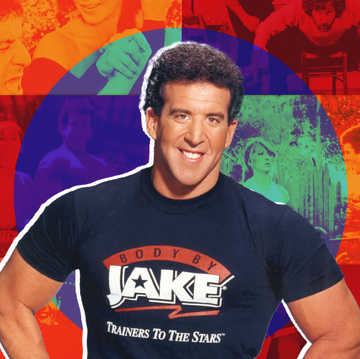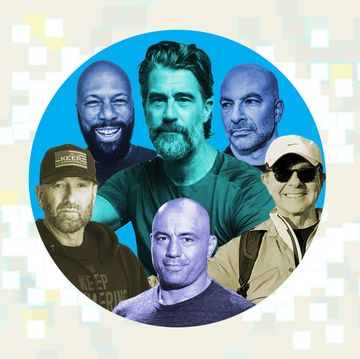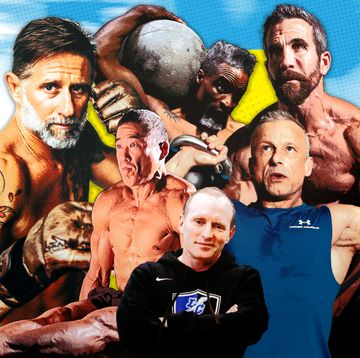DESPITE THE LOOMING threat of the ongoing pandemic, Emily Collinson, a NASM-certified trainer and coach for the group-fitness chain Solidcore, was eager to get back to training clients when her studio reopened in Washington, D.C., this past summer. Then she reviewed Solidcore’s proposed health-and-safety precautions. “There were all these glaring holes in terms of protections,” she says. Specifically, she says that early guidance suggested coaches would be allowed to wear masks under their noses and clients would not be required to wear masks at all.
So Collinson shared her concerns with her studio manager and, after talking to fellow instructors, reshared a growing chorus of complaints with Solidcore’s director of operations. She was fired shortly afterward. (An email obtained by Men’s Health shows that she was fired for the “unprofessional nature” of her conversations with other coaches. After a Districtwide health mandate was issued, Solidcore adopted stricter health and safety practices in markets across the country.)
In Seattle, Kate Troja, who had coached for six years at CorePower Yoga locations in both Southern California and the Pacific Northwest and had earned her 200-hour and 80-hour “yoga sculpt” certifications through Yoga Alliance–approved company programs, had a similarly disempowering experience. But it had started months before the pandemic. “I was doing work on unpaid time—prepping classes, making playlists—and I had safety concerns as a young woman tasked with opening and closing early in the morning and late at night,” she says.
These issues felt particularly galling considering that, in her estimation, the studio was making “a ton of money” while many instructors make around minimum wage. Once the pandemic hit, Troja learned via corporate-wide Zoom call that she and the rest of the company’s staff (minus management) had been laid off. No severance. No guidance on what to expect next.
In New York, Jahkeen Washington, the NCCPT-certified co-owner of JTW Fit, a boutique fitness studio based in Harlem, faced his own challenges to keep things running this year. (Washington is participating in the Men’s Health Next Top Trainer competition currently underway.) But after the tragic death of George Floyd in May, he also joined a rapidly growing WhatsApp group that now includes over 150 fitness professionals and learned more about the racial discrimination his peers faced within his field. There, trainers at big-name gyms shared their own stories about microaggressions at work and pay disparities. Yet many lacked the power to fight back. “We’re living in a time right now where, honestly, most people are afraid to bring these issues up because it could end up being the loss of their job,” Washington says.
Working as a fitness trainer can look like a dream job. What other career allows you to wear athleisure to the “office” and work out for a living? In the group-training world, many instructors get free access to great facilities and the chance to showcase their talents in a way that might build their personal-training business. Some people do this full-time, others as a side gig.
The profession seems as fun and flexible as the people leading each session. Except many trainers now say that they’ve been experiencing something very different: the feeling that they’re disposable, interchangeable, and often devalued by the larger companies they work for. That disconnect became especially apparent this year after the pandemic forced gyms across the country to close for months and then radically adjust their operations. For Black trainers especially, the death of Floyd drove home their own everyday experiences with racism, including bias, microaggressions, and appropriation at work. In gyms, that can come from management, peers, and even clients.
While Collinson, Troja, and Washington are all at different points in their fitness careers, each of their experiences led them to a similar conclusion: They work in an industry dedicated to promoting health and personal development, but workplace conditions make it difficult for trainers to be happy and healthy, too. “Fitness is all about community,” says Collinson, echoing the ethos that kept so many gym floors packed before COVID-19. If the best and brightest coaches feel demoralized or pushed out, who is left?
In some cases, it may be a less experienced or increasingly apathetic trainer stuck enduring those indignities, one who is now in charge of helping you avoid injury and meet your goals. Some top trainers have spun out successful digital operations via tools like Zoom in this new normal, but that’s not a viable choice for everyone, especially fitness pros who haven’t built up big followings online and work with groups instead of individuals. For some, there’s still no clear path to making a comfortable, healthy living.
Yet one person alone can’t force one company, let alone an entire industry, to correct course. So Collinson, Troja, and Washington have called on their communities and joined with their fellow workers to create change together. Each is working to reshape how the fitness industry operates through their own inventive ways of organizing labor. They’ve taken steps to build a new type of strength, which might have a chance to change problematic working conditions at gyms. Even if it takes more pain before the gain.
Pushing Harder for Progress
PLACES LIKE SOLIDCORE, CorePower Yoga, and even JTW Fit help power a $94 billion fitness industry that increasingly depends on highly skilled trainers to teach specialized classes to small groups of clients. The boutique gyms with communal classes have expanded rapidly over the last decade while larger gyms without that personal touch have experienced less growth and become stagnant, according to a recent report from the International Health, Racquet & Sportsclub Association.
On one hand, that’s great for the estimated 374,000 full-time trainers pulling in a median income of $40,000 a year, based on U.S. Bureau of Labor Statistics data. On the other, it can make it tough for trainers trying to break in to get enough hours. Some companies don’t necessarily have to pay people well because so many still want a shot at that dream-job ideal.
Part of the disconnect between what trainers hope to receive for their effort and the reality on the gym floor comes down to miscommunication, says David Otey, C.S.C.S., a Men’s Health Advisory Board member and chief content officer for the Pain-Free Performance Specialist Certification program, who has 14 years of industry experience. Hiring managers and brands can do a poor job of setting realistic expectations. “When trainers come in, sometimes they’ll get the fairy-tale response, ‘Oh, well, you’ll have a full book in three, four weeks, and you’ll be able to work whatever hours you want,’” he says. “And you learn as a trainer that that’s not really the case. You have to say yes to as many things as possible in the beginning, because you know you’ve got to pay the bills.”
For example, before she lost her job as a yoga instructor at CorePower, Troja felt that her pay didn’t come close to matching her level of experience or what she considers a fair portion of the revenue. “I was earning [just] above minimum wage per hour, which is despicable even for the fitness industry, and regularly teaching classes of 30 to 45 students who are paying $25 per class,” she says.
Many trainers are classified as part-time employees or contractors. This can help them to keep a flexible schedule—but it can also preclude them from receiving any benefits, like health care, from their employer. Collinson fit that bill. And in some cases, like Collinson’s experience at Solidcore, coaches are required to pay for specialized training provided by the company (on top of any other fitness certifications they might hold) before auditioning for a job by teaching trial classes.
When Collinson started teaching at Solidcore in 2019, she kept her day job as an administrative professional. She’d also been active around political and social issues since college and is a program director at a nonprofit group called Rising Organizers, so the idea of rallying group support came naturally. After being fired, she contacted a friend from that community, who advised her to file a complaint with the National Labor Relations Board. An early examination by an NLRB case investigator suggested that because of Collinson’s job duties and level of control over how those duties were performed, she should have been protected by the National Labor Relations Act as an employee, despite Solidcore's classification of her as an independent contractor. That case is still ongoing.
But organizing at Solidcore didn’t end with Collinson’s role at the company. She and her collaborators (several of whom shared concerns directly with Men's Health) have since formed a public-facing group called Solidcore United to publicly address corporate neglect and impropriety. In June, 32 employees and independent contractors signed an anonymous letter of demands for COVID-related protections in their workplace. In August, some workers also helped inform a BuzzFeed investigation that alleged a culture of sexual harassment, racism, and body shaming at the company. The allegations surfaced under the leadership of founder and CEO Anne Mahlum. Solidcore United has since sponsored a petition calling for Mahlum to resign.
When asked for more clarification about these issues, the company emailed a general statement. “We support our coaches and staff and take their feedback seriously," said Bryan Myers, Solidcore's president and chief operating officer. He added that the company has "always and will continue to provide a clean, safe space for clients, coaches, and staff" and welcomes feedback as it navigates how to deal with the coronavirus.
Kate Troja was part-time at CorePower Yoga, too, while keeping her day job as an epidemiologist. After being laid off, she thought a lot about how TSG Consumer Partners, which holds stakes in Planet Fitness, Stumptown Coffee Roasters, and a chain of collision centers, had also invested in CorePower Yoga. “When a private-equity firm owns a company like CorePower, what does it mean for students and staff?” she asks.
After speaking to around 40 fellow workers in her network from San Diego to Seattle, she formed the CPY Coalition, an advocacy group that shares information about potentially unsafe working conditions, low wages, and unfair labor practices. In May, the group put up a website to let others anonymously share their own experiences at the company, and Troja says that more than 600 former employees have done so through the site and the group’s Instagram account. The CPY Coalition now advocates for the equitable treatment of instructors, including fair compensation and benefits; role definition; and enhanced safety measures. It has also called for an increase in BIPOC representation across the company (the current executive staff is 100 percent white) and shares online testimonials from clients upset at how their favorite teachers are being treated.
“We want to compel leadership to make CorePower a safer and more equitable place to work and practice, but they seem to only be financially motivated by the potential that people will cancel or freeze memberships when they hear this is how they treat their staff,” Troja says. “Students have been surprised to hear you can work full-time for CorePower in Seattle and be on food stamps.”
For his part, Washington started JTW Fit in Harlem in 2013 hoping to create a space that his community was lacking. “I didn’t see anything that was fitness related or specific or prioritizing health and wellness in the neighborhood,” he says. He also remembered how it felt to work and train at other gyms, where he saw few faces that looked like his, so representation became a major focus of the business. The goal, he says, is to “get people that look like us in the gym… giving them an outlet, and a space to feel confident and comfortable.”
After hearing about other trainers’ troubling experiences on WhatsApp, Washington joined Fit For Us, an organization that evolved from the group chat to respond to systemic racial inequities across the industry. He didn’t found it but was one of the early members. “To hear those stories and hear [about] the inequities in pay and not having our voices amplified or heard, when decisions are being made when it’s our culture that’s being used, it was just a lot,” he says. The organization seemed like a good way to offer others who were struggling in the industry more support.
Fit For Us was started by Percell Dugger, a strength coach and founder of the wellness brand GOODWRK, and a former indoor cycling instructor turned entrepreneur named Mary Pryor. The organization now has over 100 members on a dedicated Slack channel, who come from all levels and vocations within the industry, from trainers and instructors to managers and gym owners. They advocate for a greater emphasis on inclusion, belonging, and support for Black and other marginalized fitness pros and for more transparency in hiring and employment practices through brand partnerships and industry initiatives.
Members also want to empower professionals while serving their communities, particularly in regard to health and nutrition. To that end, the group held a three-day digital conference in October, which included a town hall and a series of member-led fitness and wellness workshops. Washington served as a panelist and offered his perspective as a gym owner and entrepreneur. He’s now a member of the Fit For Us leadership team, which determines strategies for how the group operates. That’s included programming alongside the nonprofit Color of Change, sharing free online sessions promoting fitness and wellness during election season.
“We’re going to be creative in how we present things,” Washington says. “I think the world is ours right now and that we have a really good chance to make some change sooner than later. Much sooner than we think.”
Where the Movement Goes Next
THE NEXT BIG FLEX for some of these efforts might be forming a real union—the type of collective organization that could pressure major companies to make systemic changes in how they operate, because employees have a seat directly at the bargaining table. It’s worked for plenty of trades, from autoworkers to electricians and pipe fitters. But there’s still no precedent for that in the fitness industry.
In fact, there have been a few recent setbacks. One unionizing effort among Gold’s Gym trainers stalled out in 2017, when trainers in Los Angeles voted against the idea. Another, started in 2019 by YogaWorks instructors in New York City, gained some recognition from the company but never had a chance to bargain for a contract because the company shut down all New York locations in April 2020.
Nationally, at least one new group has some traction. Group Fitness Instructors United was founded by Emily Stewart—a Seattle-based fitness professional with certifications to teach barre, yoga, Pilates, indoor cycling, and more—and has aligned with a local machinists lodge, the International Association of Machinists and Aerospace Workers 751, for more support. For now, Stewart is building connections with fitness instructors and coaches who work in disparate corners of the industry. Her contact list includes more than 600 people. Group Fitness Instructors United has no public-facing social media accounts, so that she can protect people’s privacy.
“My big job right now is just to have what I call gut checks, which are conversations that I record with group fitness instructors who feel like they have a complaint or something really egregious has happened to them,” Stewart says. “I’m talking sexual harassment, stalking, broken bones and body parts. I’m talking unlawful noncompete agreements, hiding COVID-19 cases. Discrimination. You name it, I’ve heard it.”
The question that everyone is still grappling with is what’s the most effective way to make lasting change. Stewart conducts anonymous surveys and interviews in hopes that the qualitative data she collects will “show the reality of our industry” in order to garner support from powers outside the fitness space—i.e., legislators—for reforms like standardizing training certifications and tightening labor laws to make employee benefits the norm. “When things are desperate, you can’t expect individuals to make good decisions,” she says. “You know, sometimes it’s gotta come from above.”
Otey agrees that unions in fitness could lead to more rigid classifications for trainers, but that might not benefit everyone involved. “I think if you start to unionize, then that’s when businesses will say, ‘Well, okay, in order to have this, you may have to have this certification or this license,’” he says. Depending on where the bar gets set in terms of experience, cost, and how much time it takes to achieve, that could be another barrier to entry. “Unfortunately, for some people that would shoot them in the foot.”
Regardless, fitness companies should rethink how they communicate, according to Otey. “Brands do a very bad job explaining how the trainer gets paid what they get paid. If they did a better job of explaining, whether it’s to group fitness instructors or to trainers, I think there would be a lot less questions and animosity in the air,” he says.
For Collinson, who now coaches at F45 Training, one big step forward would be an NLRB ruling in her favor, so she could be reinstated at Solidcore and become even more active in organizing with Solidcore United. But there’s some evidence that things are at least slowly shifting. After the BuzzFeed investigation broke, Mahlum, the company CEO, shared a video on Solidcore’s official Instagram account to outline a new set of protective and progressive HR initiatives and corporate training programs. She also defended her previous leadership of the company and denied the allegations of wrongdoing. It’s unclear what additional steps Solidcore may take. (In late November, the mayor in Washington D.C. issued new guidance for gyms to temporarily stop indoor group fitness classes in the city. Solidcore defied the order to close, but after a visit from local authorities, the chain complied with regulations, suspending operations for the time being.)
Troja’s CPY Coalition and other ongoing organizing efforts in the yoga world seem to have had some effect at CorePower Yoga, too, although the company declined to share specifics. “In response to the changing environment, we conducted a comprehensive evaluation of our business and have implemented a number of changes to our operations,” a spokesman shared in a statement to Men’s Health. That includes “increasing the pay rate for all teachers” and “establishing a framework that provides greater transparency in career and wage progression.” Fixing inclusion, diversity, and bias is also on the list. But Troja is still exploring the idea of unionizing as a “unique opportunity” for trainers there; the CPY Coalition’s Instagram account links to a site sharing union cards for CorePower teachers to sign if they’re interested, an early step for rallying support.
At Fit for Us, the goal is still to create a major shift in industry representation within at least five years, with trainers feeling more in control of their careers while, as Dugger, the group’s cofounder, puts it, “knowing that the work within their industry is impacting their communities in a positive way.” Since joining the movement, Washington only feels more inspired. “You definitely like to have a little bit of feedback and people to let you know that you’re not crazy,” he says. “And we know our mission is super important. We’re going to continue to move together.” As all these trainers have learned: There’s strength in numbers.
*Additional reporting from Lindsay Berra
